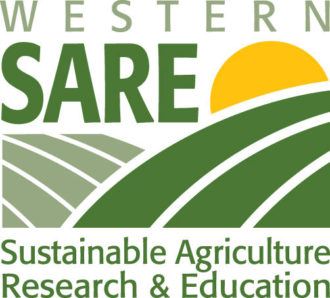Sustainable Agriculture Fact Sheet June 2020
Background: Breadfruit has an array of potential ecological, social and economic benefits for Hawai‘i. Hawai‘i’s long history with breadfruit is founded on a body of unique local knowledge, where most cultivation has traditionally taken place in diversified agroforestry settings.
The Problem: Breadfruit production is changing in Hawai‘i, with some producers pursuing industrial agriculture models (no companion plantings, high application of herbicides, and high levels of fertilizer and irrigation), others taking a more traditional approach (diversified agroforestry integrating many other plants into the system with little to no outside inputs), and still others taking various middle ground approaches (for instance, plantation-style orchards incorporating organic methods or some degree of co-cropping – typically in the form of perennial cover crops). Because the modern breadfruit industry in Hawai‘i is just emerging, there is much uncertainty about best production practices and has been very little formal research into best practices, environmental and economic impacts, phenology, and yields of breadfruit grown in different microclimates in Hawai‘i. Answers to even simple questions, such as average annual nutrient requirements or ideal foliar nutrient profiles, are non-existent.
The Research: Led by Dr. Noa Lincoln at the University of Hawaii at Manoa, this research set out to answer some of those basic production questions. The research team assessed breadfruit production on a total of 43 farms on four islands. The farms were assessed in terms of practices, soil health, tree health, foliar nutrition, and fruit quality. Individual reports were produced for every participating farms, with in-person visits to discuss their farm results and how they compared to other producers in the state. From initial visits farmers expressed their general feelings and concerns with their production, and subsequent reporting back to the farmers were able to, in many cases, directly address their concerns. The data generated from this study provided to core data for multiple extrapolations that laid an essential foundation for understanding breadfruit orchard management.
The Impact: The study produced the first derived recommendations for fertilization and foliar nutrient assessment to aid in nutrient management of breadfruit production, which is critical to appropriately managing trees for higher yields and for giving farmers the confidence to scale up production.
The study also helped to clarify that visual assessment of the tree health was a poor indicator of actual productivity, and that the best standardized method for assessing foliar nutrients was the petiole – the stem that connects leaf to branch – rather than any portion of the leaf itself. The project showed that nutrient management appears to be at the core of many problems expressed by farmers, including high rates of fruit drop and high variability in yields. The team also produced generic fertilizer recommendations for growers who did not want to do ongoing nutrient testing.
Extension handout for Breadfruit Nutrition
Extension publication for Breadfruit Pruning produced in partnership with Hawaii ‘Ulu Cooperative
More information: nlincoln@hawaii.edu, (808) 956-6498
